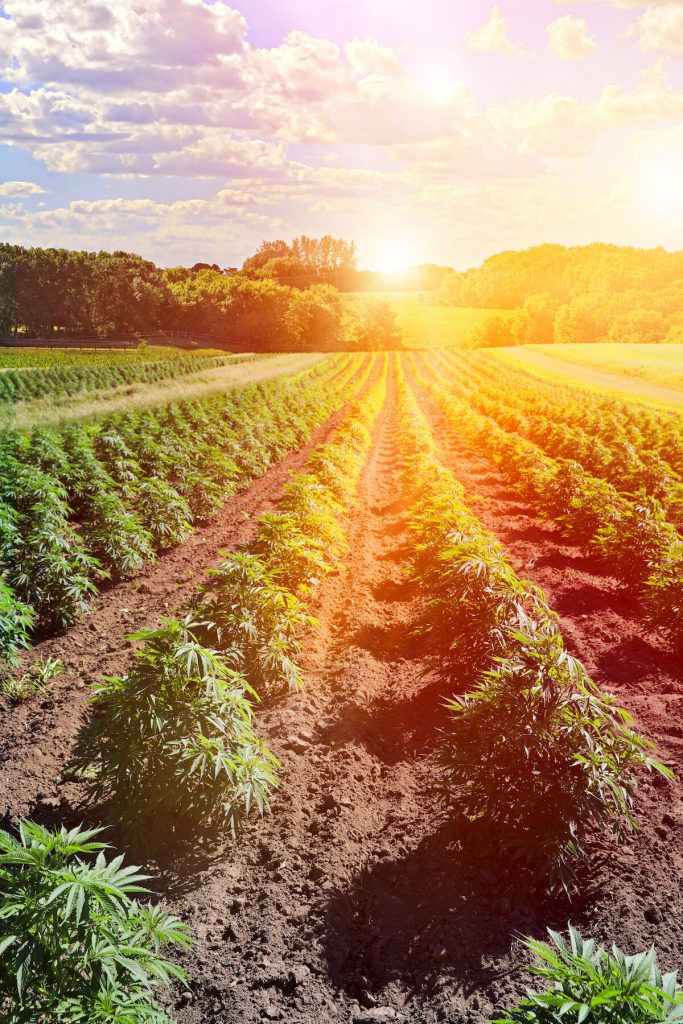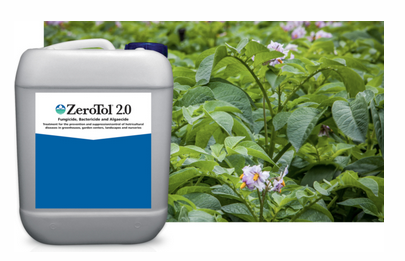Setting Yourself Up For Success
Whether it’s a personal garden or a large scale planting, it’s important to make sure you are set up for success from the beginning. This means taking the time to ensure potential threats have been mitigated, substrates have been properly prepared, and tools have been thoroughly sanitized.
For anything bigger than a personal garden, I always recommend a soil analysis and water test. These can be expensive for the home grower but can help to identify any of the pathogens or viruses or bacteria that could be present in your media before you’ve even planted a seed or clone.
Just because something comes up in your water or grow environment doesn’t mean that you can’t use the area, plot, or water source. A lot of people might be hesitant, but if you can mitigate issues in advance, you can introduce the good stuff that your plants will need.
Nothing is unfixable.
Basically, the key to clean grows indoors and outdoors is making sure that growers are starting clean and staying clean. That’s why I like working for Biosafe Systems. I have the ability to allow growers to mitigate a situation that could be very harmful; I can show them how to start clean and then show them how to stay clean.
Mitigation, Sterilization, & Inoculation
As you prepare for success, it’s important to keep the Pathogen Triangle in mind. Growers have to be able to address not only pests, pathogens and susceptible hosts, but also a conducive environment that is often overlooked.
By mitigating and remediating in advance of planting, you’re helping to remove pathogen pressure and create an environment that is not conducive to threats, two necessary conditions for grow problems. Only when all three things overlap does an infestation occur and is able to get out of control, which is why eliminating that chance in advance is the best approach.
Mitigating Problems (Outdoor)

In agriculture, there are plenty of chemical approaches to soil remediation and problem mitigation but most of these treatments cannot be used when growing accumulator plants, like cannabis. Fields affected by contaminants would typically necessitate gnarly fumigants or things that could be absorbed by cannabis, creating potential hazards for the end user.
But just because you can’t use typical fumigants and just because something is there, doesn’t mean you can’t use the plot. You can approach the situation through remediation using products like Terra Start or Terra Clean 5.0. Applying these products in a chemigation fashion or used as a soil drench will remove the harmful contaminants. Depending on the media and contaminants, different beneficial microbes may be needed.
Inoculation after sterilization is a great approach.
Sterilizing Substrate (Indoor)
When working with a substrate indoors, sterilization can help to prevent and contain problems. It is important to note that if you are using a substrate mixture that contains organic components (amended coco, soil, perlite mixes, etc.), sterilizing these substrates will essentially negate the value of their organic components.

For a truly sterile substrate, a coco or rock wool substrate will allow complete sterilization using Zerotol 2.0. or TerraClean 5.0. Zerotol or TC5 are essentially the corvette version of H2O2; We’ve taken peroxide and put it on steroids with peroxyacetic acid, basically peroxide and vinegar that have been stabilized in solution to create a very high-level, short-lived disinfectant.
For substrates, the main advantage to a product like Zerotol is that, once dry, it becomes inert, breaking down into hydrogen and oxygen alone, leaving nothing behind. This makes it a great tool for pre-planting sterilization as well as ongoing substrate drenches as needed.
Sterilizing Equipment: Zerotol & Sanidate
The other upside to Zerotol is that it’s stable state allows for a more consistent level of sanitation. As soon as Zerotol is exposed to water and begins to bubble, that’s it beginning to work before your eyes. Sanitizing your tools regularly (as well as your entire room) helps to prevent issues that could linger from cycle to cycle.
It can sometimes take upwards of two hours to clean a room, and with H2O2, you’re getting a decreased level of sanitation by the end of that 2-hour mark. With Zerotol, you’re still getting that same consistent level of sanitation at the 2-hour mark, reducing time spent mixing and refilling sprayers and tanks.
Just like in your substrate, Zerotol breaks down into oxygen and water, with zero harmful or irritating residuals, allowing it to be applied to your room and plants at any stage of growth, because when it is dry, it’s done. The lack of residuals beyond water and oxygen also gives growers the confidence to use these products to treat pathogens like botrytis and powdery mildew.

Biosafe’s products allow you to treat without worrying about impacting the quality of your products, which all remain salable, smokable, and safe for even compromised immune systems as there is nothing left but oxygen and water.
A Note on Food Safety
At this point, food safety standards aren’t mandated in the cannabis industry but it is coming. Everything we grow is smoked, eaten, or rubbed on someone’s skin, and when we see widespread legalization and the government giving the “ok” across all 50 states, we will see the FDA stepping in and we will see food safe requirements being implemented.
Those in the know are implementing food safe procedures now to get ahead of the curve by implementing Sanidate 5.0. While Zerotol is an excellent option, especially for the home grower, for commercial applications, we recommend Sanidate for all hard surfaces as it wipes out human health pathogens.
Use Zerotol for your foliar sprays, root zone treatments, and water treatments and use sanitate for anything that isn’t a sensor, bulb or soft metal (brass or bronze). You can apply sanitate, go to lunch, let sit for an hour, and know that you’ve addressed any pathogen on that surface in a food safe compliant process.
The Importance of IPM
As I’ve said before, the cleanest way to grow is to start from seed but that is not always possible for a variety of reasons. Threats can be brought in from new genetics or even from a business partner or investor walking in with dirty shoes or a dusty jacket. Because you can’t prevent real life from happening, it’s important to have an IPM in place that prevents and prepares you for issues rather than resorting to reactive and curative attempts to fix an infestation. Part of that involves beefing up your plant’s immunity.
Immunity
There are no white blood cells in a plant but when we say “immunity”, we are referring to a plant's ability to defend itself. Growers can use certain microbial products like oxiphos and Regalia to induce a systemic response. This results in systemic acquired resistance, or a plant that has a supercharged ability to ward off threats, eliminating the “conducive host” from the pathogen triangle, and further preventing threats that find their way in regardless.
Setting Yourself Up For Success
I've said it before and I’ll say it again: being a good grower doesn’t mean you don’t have issues; it’s how you deal with them. Nothing is un-fixable. Setting yourself up for success from the onset means making sure your media and water are clean, your equipment is properly sanitized, and you’ve got an IPM in place to prepare for anything unexpected.
Check out our guide on identifying issues and common solutions to those issues for more information on setting up an IPM. And follow Zac on IG @zacthegrowguy_biosafe for regular video segments and tips.